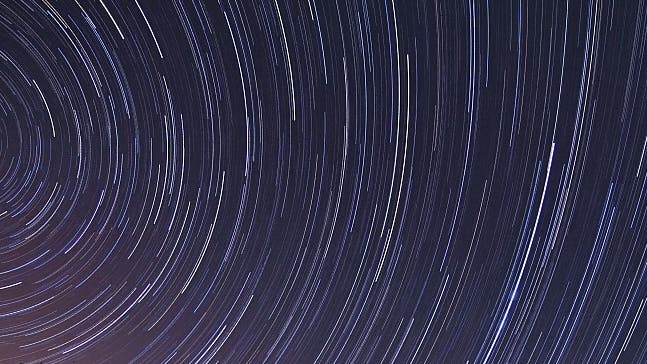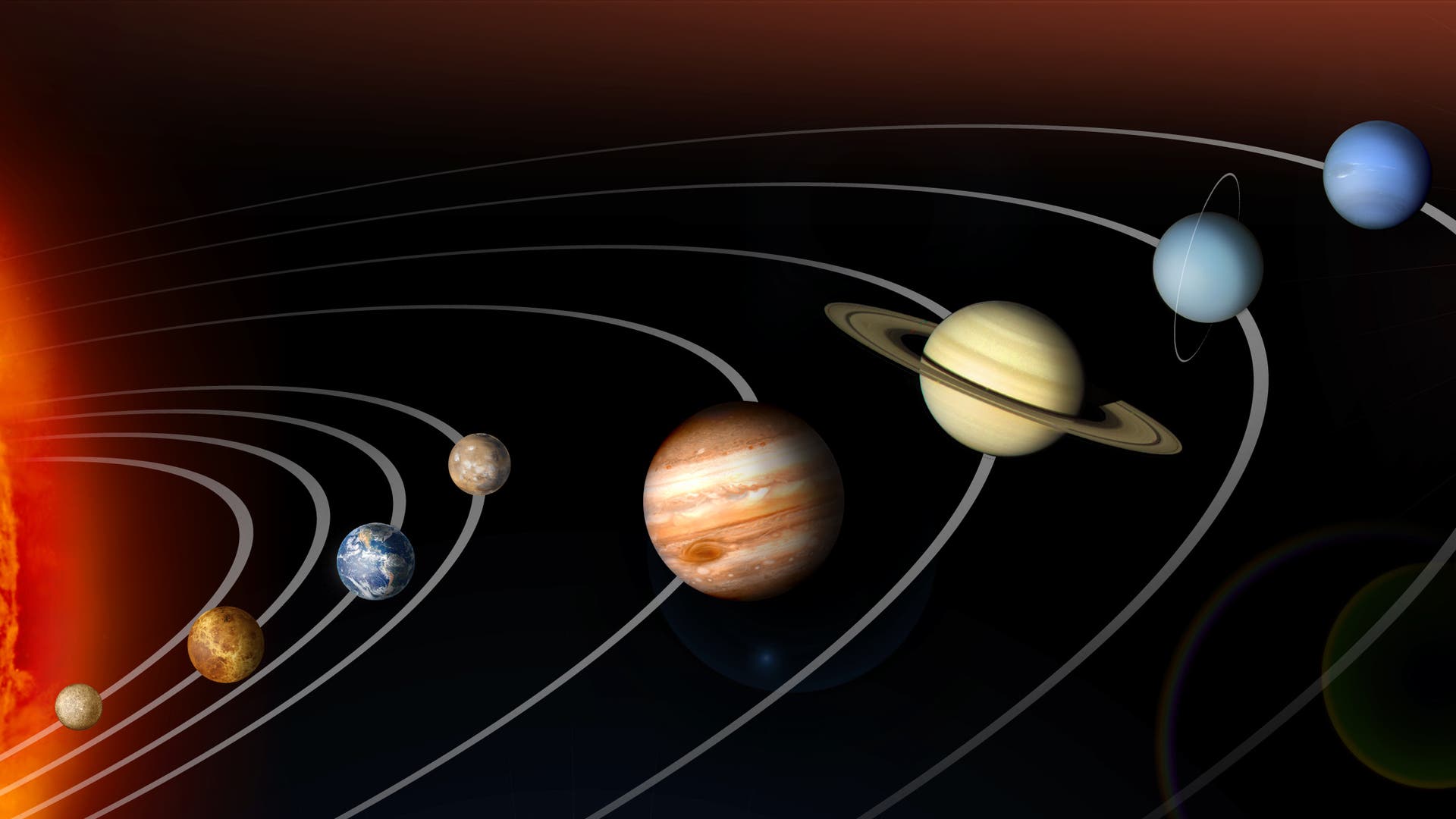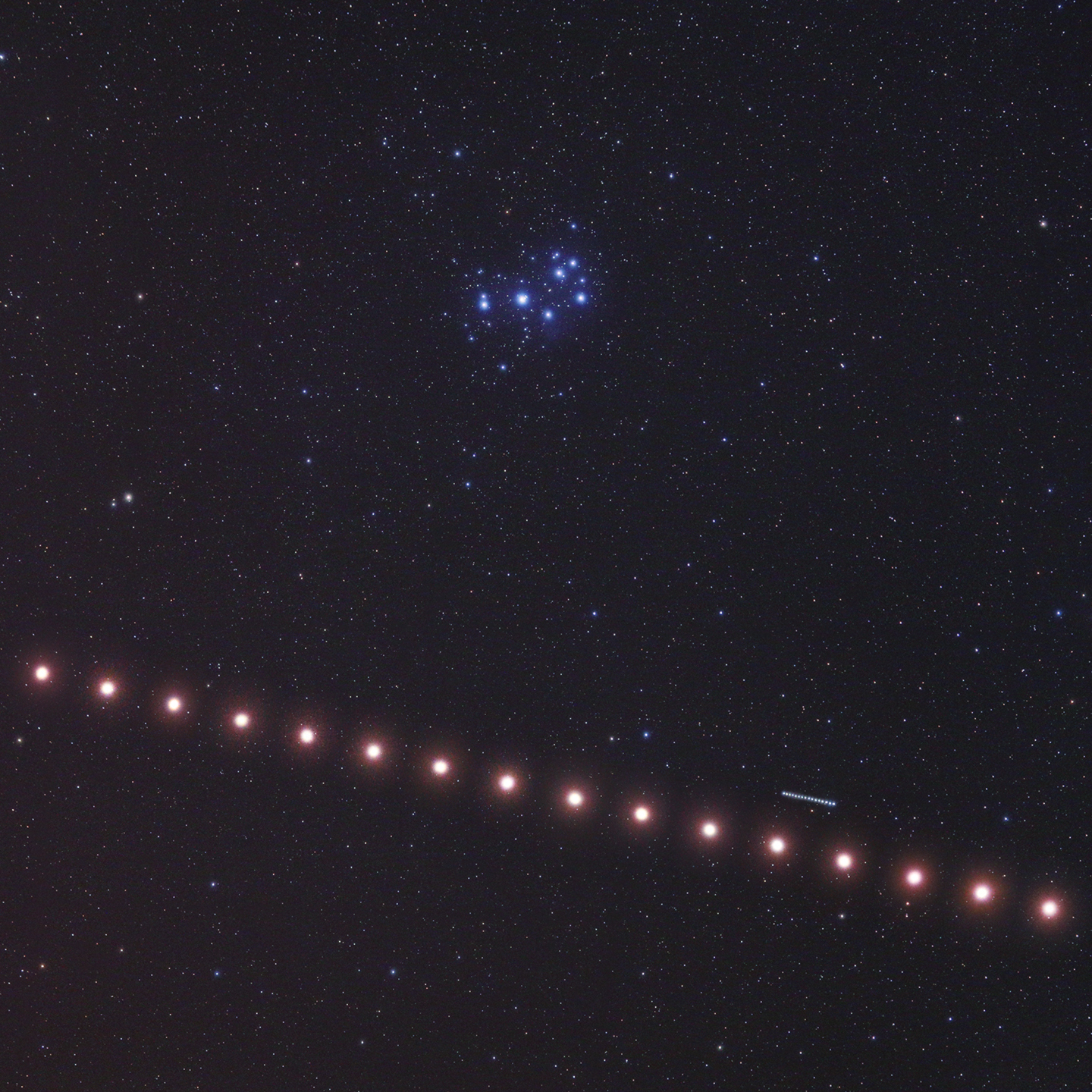Seit mehr als 30 Jahren fotografiert das Weltraumteleskop Hubble die vier Gasplaneten Jupiter, Saturn, Uranus und Neptun.#WeltraumteleskopHubble #Gasriesen #Jupiter #Saturn #Uranus #Neptun #Sonnensystem #Astronomie
Weltraumteleskop Hubble: Die Gasriesen im Visier
#uranus
From #IanWood
a candidate for '**** hits the fan chart' of the year
a #solar #eclipse parallel #red #star #MENKAR
#URANUS parallel a red star
#SATURN parallel a red star..conjunct #rahu and #neptune...giving an exact #vedic aspect to uranus...
loots of conflict, control measures. Confusion, deception..
extra polarity between old and new, control and freedom..
#INTENSE #future change is non stop
2 Likes
5 Comments
Nach Einbruch der Dunkelheit ist im Osten das Herbstviereck aufgegangen, und unweit davon leuchtet blass die Andromedagalaxie. Aber was ist das seltsame Objekt über dem Südwesthorizont? Ein Komet? Schön wäre es. Leider lässt sich nicht präzise vorhersagen, ob der seit Langem erwartete Schweifstern C/2023 A3 (Tsuchinshan-ATLAS) im Herbst ein auffälliges Objekt wird. Sicher ist hingegen, dass am 19. Oktober der von der Vereinigung der Sternfreunde e. V. (VdS) organisierte …#Saturn #Neptun #Jupiter #Uranus #AstronomischeEreignisse #Mondphasen #Planetenposition #Auf-Untergangszeiten #Sternhimmel #Astronomie
Astronomie zum Quadrat
Im Oktober kehrt die Venus zurück an den Abendhimmel, Mars wird zum Planeten der zweiten Nachthälfte, und Saturns Kulminationszeiten rücken vor Mitternacht.#Planet #Planeten #Planetenlauf #Astronomie #Merkur #Venus #Mars #Jupiter #Saturn #Uranus #Neptun
Die Venus zeigt sich wieder
https://www.youtube.com/watch?v=R5LCBPTxqpY
6 Sept 2024 #Pluto in #Tropical #Astrology: Delving into the Depths of #Transformation
Today, we'll discuss Pluto's significant position at the last degree of Capricorn and its upcoming connections with #Uranus and #Neptune. These outer planets are closely linked by harmonious aspects, making this a crucial moment to explore. We'll dive into the archetypal meanings behind these planetary combinations, using insights from Ren Butler's The #Archetypal #Universe to understand why this transit is so impactful.
1 Comments
#quote
"On September 18, a #partial Lunar #Eclipse accompanies the #Full #Moon in #purvabhabrapada. The Moon conjoins #Neptune, and the two form the apex of a harmonious #kite figure with the #Sun, #Pluto, and #Uranus. #Mercury and #Saturn are in exact opposition to each other. #Jupiter is still in tense aspects to the Moon and Mercury.
The mystical quality of time calls upon us to keep an eye on our boundaries and limitations. If your life’s inner and outer structures are stable, you can receive vital impulses during these days, the fruits of which will be welcome in the coming weeks. Unstable situations and circumstances, on the other hand, may call for a fundamental reorientation. The signs of the times are excellent for restructuring, as indicated by the Sun-Uranus trine on September 19."

https://www.australiangeographic.com.au/news/2022/09/nasa-shares-crystal-clear-image-of-neptunes-rings/
One person like that
Der Monat September bietet häufig stabiles Hochdruckwetter mit sehr klarer Luft – eine gute Gelegenheit, mit einem Fernglas die Milchstraße zu erkunden. Vieles, was das Auge erfreut, findet sich innerhalb des Sommerdreiecks, gebildet aus den hellen Sternen Deneb im Schwan, Wega in der Leier und Altair im Adler. Dort tummeln sich offene Sternhaufen, leuchtende Wasserstoffnebel, Dunkelwolken und Doppelsterne. Zur Beobachtung des Nachthimmels sollten Sie möglichst einen dunklen Ort abseits …#Saturn #Neptun #Jupiter #Uranus #AstronomischeEreignisse #Mondphasen #Planetenposition #Auf-Untergangszeiten #Sternhimmel #Astronomie
Entdeckungen im Sommerdreieck
Im September 2024 können bis auf die Venus alle Planeten beobachtet werden, und auch einige ihrer Monde bieten spannende Anblicke.#Planet #Planeten #Planetenlauf #Astronomie #Merkur #Venus #Mars #Jupiter #Saturn #Uranus #Neptun #Opposition #Konjunktion
Fast volles Haus am Himmel
#Uranus in #Taurus the electric planet of sudden events
#Venus is the ruler of Taurus and so we see this

BLUE FLASH FROM VENUS: Italian photographer Paolo Palma was watching Venus sink into the sunset on Aug. 12th when something extraordinary happened. A piece of the planet broke away and turned blue:
This is a very rare #blue #flash from Venus.
You've heard of green flashes. They're sometimes seen when the sun is setting at sea. Temperature inversions and strong thermal gradients in air above the sea surface split the sun into R-G-B colors and magnify the green into a dramatic flash above the setting sun.
Blue flashes are formed in the same way as green flashes. However, blue flashes are harder to see because air molecules and aerosols scatter blue light. When the air is exceptionally clear, however, the blue flash emerges.
Photographers are lucky when they catch a blue flash from the sun. Catching one from Venus is a once in a lifetime shot. Congratulations, Paolo!
https://spaceweather.com/
4 Likes
One person like that
7 Likes
7 Comments
https://www.youtube.com/watch?v=wtrkPkPDLqY
#trumps chart she sees something coming
#tropical #astrology
Trump, Biden And The #Mars / #Uranus Transit #Algol ✨A Different Take🔥
One person like that
#Mythic #Astrology of #Taurus : #Algol & #Biotech ( #Uranus in Taurus bonus feature)
https://youtube.com/watch?v=dxk17edrJo8
Star #Algol
Source: https://youtube.com/watch?v=OzV_aFcwWnA
ALGOL WITH #URANUS! #HOW WILL THIS CONJUNCTION AFFECT US AND THE #WORLD? #ANCIENT #ASTROLOGY
https://youtube.com/watch?v=3ZkPA_2t8wY
◘ May 3: Celestial Parade
◘ May 4: Close Conjunction of #Moon and #Saturn
◘ May 5: Close Conjunction of Moon and #Mars
◘ May 5-6: η-Aquariid meteor shower
◘ May 6: Moon at perigee
◘ May 8: New Moon
◘ May 8-9: η-Lyrids meteor shower
◘ May 13: #Uranus at solar conjunction
◘ May 14: #Mercury at its highest altitude in the dawn sky
◘ May 17: Moon at apogee
◘ May 18: #Jupiter at solar conjunction
◘ May 20: The Devil #Comet meets #Rigel
◘ May 23: Flower Moon
◘ May 24: Lunar Occultation of #Antares
◘ May 31: Lunar Occultation of #Saturn
In der zweiten Maihälfte stehen alle Planeten westlich der Sonne, und fast keiner von ihnen lässt sich beobachten – außer Saturn, der das Ende der Planetenflaute einläutet.#Planet #Planeten #Planetenlauf #Astronomie #Merkur #Venus #Mars #Jupiter #Saturn #Uranus #Neptun
Im Westen wenig Neues
In der zweiten Maihälfte stehen alle Planeten westlich der Sonne, und fast keiner von ihnen lässt sich beobachten – außer Saturn, der das Ende der Planetenflaute einläutet.#Planet #Planeten #Planetenlauf #Astronomie #Merkur #Venus #Mars #Jupiter #Saturn #Uranus #Neptun
Im Westen wenig Neues
2 Likes




